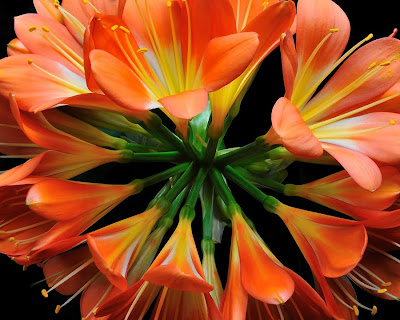 Clivia minima is a greenhouse evergreen which was first introduced to Great Britain in 1823 from South Africa. Formerly it was called Imantophyllum, but in around 1866, when a new classification was introduced, it was re-named Clivia, after Charlotte, Duchess of Northumberland, nee G i v e , who is said to have been the first to flower the plant in England. It has the common names Kaffir or Caffre lily and Natal lily, which no doubt were used when it bore its former name, but the use of these has died out now: that it has such a simple generic name.
Clivia minima is a greenhouse evergreen which was first introduced to Great Britain in 1823 from South Africa. Formerly it was called Imantophyllum, but in around 1866, when a new classification was introduced, it was re-named Clivia, after Charlotte, Duchess of Northumberland, nee G i v e , who is said to have been the first to flower the plant in England. It has the common names Kaffir or Caffre lily and Natal lily, which no doubt were used when it bore its former name, but the use of these has died out now: that it has such a simple generic name.It has very fleshy roots and strap-like leaves of which when it is growing well, it will produce four to six new ones during the growing season. It flowers in the spring.
Clivias are not difficult to raise from seed, and once you have a plant propagation of further plants can be carrried out by means of offshoots, which frequently form on flowering size plants. The only drawback to raising your plants from seed is that you will have to wait three or four years before you see it flower. On the other hand flowering-size plants are expensive. In my ignorance of the length of time it takes the plant to flower, I bought a packet of seeds in 1956 for three shillings. It contained three seeds which I sowed on 9 April 1956, and all three germinated. It was four years before the first plant flowered, but the tremendous pleasure it gave me was worth all the time I had waited. I still have three clivias which have been propagated from time to time from these original plants. It is necessary to discard plants after a number of years, because they would require very large pots or tubs and take up too much room in the greenhouse.